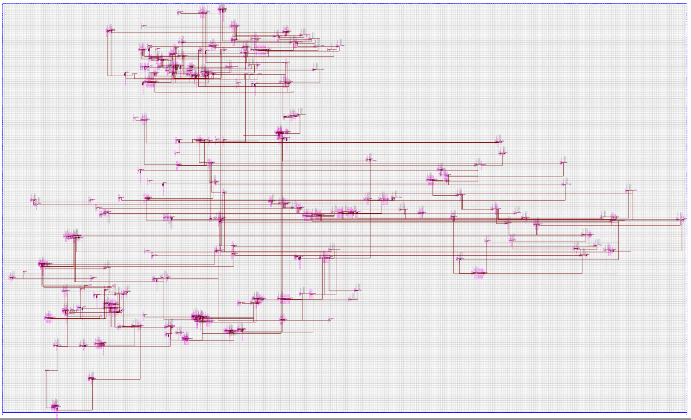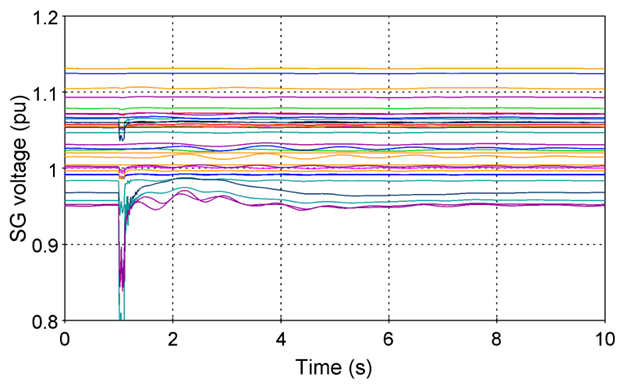Transmission and distribution system operators are facing increasingly complex challenges when managing large-scale power systems, especially with the integration of Inverter-Based Resources (IBRs). Electromagnetic Transient (EMT) simulation tools have become a game-changer in this context. The reasons of utilizing EMT simulations are many and include detailed modeling of inverters, fast dynamic control loops, non-linear components, grid stability assessment, transient behavior analysis, and the analysis of fault scenarios, both balanced and unbalanced.
EMT simulations are essential for predicting grid behavior during disturbances and extreme events.
Despite the many advantages of using EMT simulation, some grid operators remain hesitant due to concerns about simulation time, model complexity, data availability, and model initialization challenges.
EMT Simulation Challenges
- Complex Power Systems: Large-scale power systems with the integration of IBR pose significant modeling challenges such as grid stability, grid integration, disturbances and fault-ride through capabilities, SSCI and so on...
- Accuracy and Fidelity: Accurate representation of IBR components, non-linear behavior, and transient responses are critical but challenging to simulate.
- Computational Demands: Modeling demands substantial computational resources, leading to extended simulation times.
- Data Availability: Obtaining comprehensive, accurate, and consistent data for component parameterization can be a hurdle.
- Model Initialization: Proper initialization of complex models to ensure stable simulations can be complex and time-consuming.
How EMTP® Addresses the Challenges
- Comprehensive Modeling: EMTP® provides a platform for detailed and comprehensive modeling of complex power system components, allowing users to accurately represent the behavior of IBRs and other elements. We offer more than providing just software, our team of engineers assists ISO in adoption of EMTP® and advises on best practices.
- Accuracy and Fidelity: EMTP® offers high-fidelity models for both linear and non-linear components. In contrast to its major competitor, EMTP® uses a fully iterative solver to solve nonlinear models as well as control systems. This is the sole method to ensure accuracy and avoid accumulating numerical errors leading to numerical instabilities.
- Efficient Computation: EMTP® is optimized for EMT simulations using a sparse-matrix solver, making efficient use of computational resources, which can significantly reduce simulation times for very large-scale power systems. No need to invest in heavy computation resources.
- Data Support: EMTP® supports data import from PSS/E or CIM, making it easier to work with available data and ensure the accuracy of model parameterization.
- Model Initialization Tools: EMTP® has a load-flow solver and initializes every device with load flow results. No need to go back and forth between software solutions!
EMTP® Example
To demonstrate how EMTP® can solve these challenges, consider the following example:
- Reduced 240-Bus WECC Dynamic Model (Test case) The system has:
- 243 buses
- 146 generating units at 56 power plants (incl. 109 synchronous machines and 37 renewable generators)
- 329 transmission lines
- 122 transformers
- 7 switched shunts
- 139 loads
- Model is imported to EMTP® by PSS®E Import Tool
- WECC renewable models are used (WECC PV Park Model)
- A simulation time step of 50us is employed with a simulation time of 10s. The test is conducted using a single core without parallel computation, on a Windows machine with Core(TM) i7-11800H @ 2.30GHz and 64GB RAM
- The average time required to solve the electrical network equation for a 10-second simulation using 50-us time-step is 39.9 seconds (or 3.99 seconds for a 1-second simulation). This demonstrates the speed and efficiency of the sparse matrix solver in EMTP®. The simulation time of the control systems, mainly including the IBR converter and machine exciters and governors is 340.2s. This highlights the importance of setting requirements on IBR simulation speed as they often act as the bottleneck in EMT simulations.


Selected generator bus voltages for three-phase fault event at 1 second and 0.1 seconds of fault duration.
- The results obtained from this simulation example reveal the importance of a flat start simulation and proper model initialization. No time is wasted waiting for the system to initialize.
Authors: Hossein Ashourian, Henry Gras
Date: 2023-10-24
